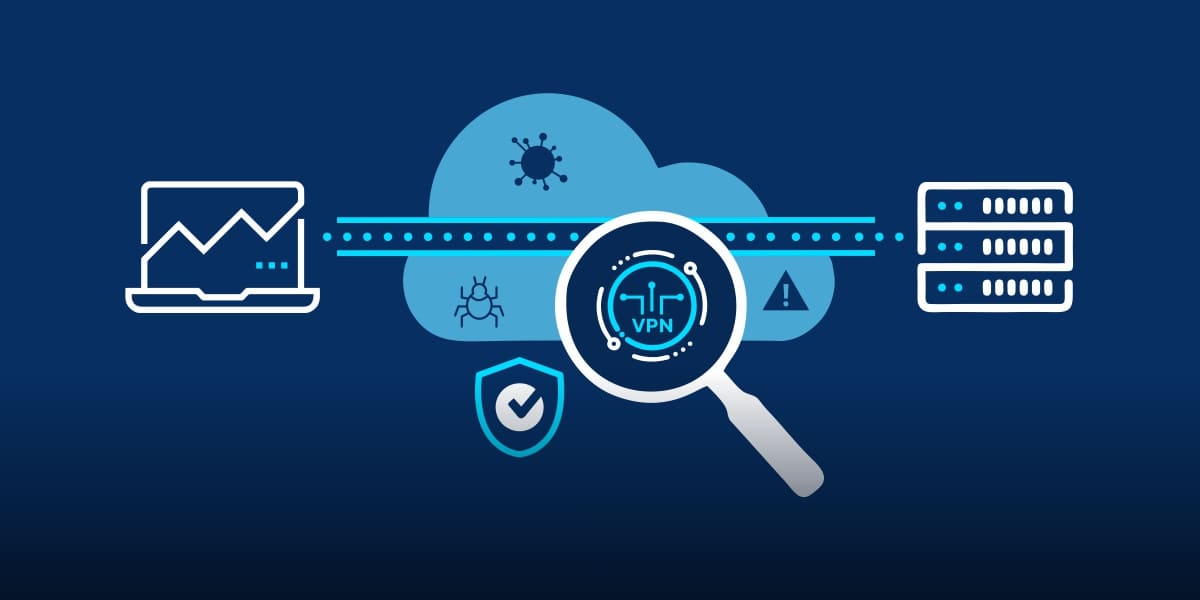In today’s fast-paced, interconnected world, secure and reliable communication between on-premises environments and cloud infrastructures is crucial. For many businesses, AWS Site-to-Site VPN serves as the bridge that connects their data centers to AWS, enabling private, encrypted communication channels. But what happens when your VPN tunnel goes down? Without proper visibility or a notification system in place, downtime can easily go unnoticed, ultimately leading to service disruptions and unhappy customers.
That’s precisely why I created the AWS Site-to-Site VPN Monitoring Script—a tool designed to automate the monitoring of VPN connections and instantly notify teams if any issues arise. In this guide, I’ll walk you through how this script works and why it’s a game-changer for managing your AWS VPN connections.
Why I Created This AWS VPN Monitoring Script
Managing a cloud infrastructure can be challenging, and when VPN tunnels go down without warning, it can disrupt critical operations. I experienced this firsthand, and as a result, I realized there was a need for a simple, automated solution to monitor VPN tunnels in real time. While AWS offers powerful tools for network security, it doesn’t automatically notify you when a VPN tunnel is down unless you’ve set up an elaborate monitoring system.
This gap led to the creation of the AWS Site-to-Site VPN Monitoring Script. By integrating AWS Lambda, DynamoDB, and Slack/Discord notifications, the script ensures you’re always informed about the status of your VPN tunnels. As a result, there’s no more need for manual checks or worry about unnoticed downtime!
Key Benefits of AWS VPN Monitoring Automation
1. Real-time Notifications
When a VPN tunnel goes down, every second counts. This script provides real-time notifications through Slack or Discord, which allows you to take immediate action. Consequently, this quick response minimizes the risk of prolonged outages and keeps your business running smoothly.
2. Historical Status Logging
The script doesn’t just notify you—it also logs the status of your VPN tunnels into DynamoDB. This enables you to review historical data and gain insights into your network’s reliability over time. For instance, if you want to see when the tunnel went down and for how long, the logs have got you covered.
3. Fully Automated and Reliable
By running as an AWS Lambda function, this monitoring solution eliminates the need for manual tracking. In addition, the script checks the VPN tunnel statuses regularly and reports any issues automatically. You’ll save both time and effort with this hands-off approach, making the entire process more efficient.
4. Easy Debugging
Need to troubleshoot? The script includes a debug mode that can be enabled with an environment variable, making it easier to pinpoint any issues or gather more granular information during setup. Moreover, it simplifies the process when something unexpected happens.
Why VPN Tunnel Monitoring is Critical
For many organizations, AWS Site-to-Site VPN connections are essential for secure communication between their on-premises data centers and AWS services. These VPN tunnels are often the backbone of critical operations, such as data replication and hybrid cloud applications. Thus, when a VPN tunnel goes down, the consequences can be severe.
Here’s why you shouldn’t ignore VPN tunnel monitoring:
1. Downtime Costs Money
Every minute a VPN tunnel is down can result in lost revenue, delayed workflows, and frustrated customers. Proactively monitoring your VPN tunnels helps prevent prolonged outages by alerting you as soon as an issue arises, which means you can act quickly to minimize losses.
2. Security and Compliance Risks
A broken VPN tunnel that goes unmonitored can expose sensitive data to risks. For industries like finance and healthcare, compliance regulations demand reliable, secure communications. Therefore, monitoring ensures you’re alerted immediately if a secure tunnel is compromised, helping you maintain compliance and protect your data.
3. Seamless Operations
For organizations running hybrid cloud environments, site-to-site VPN connections are critical for maintaining smooth operations. Whether it’s syncing data or running distributed applications, an operational VPN tunnel is key to keeping everything running without interruptions. As a result, monitoring these connections ensures uninterrupted operations.
How the AWS Site-to-Site VPN Monitoring Script Works
The script leverages the AWS EC2 DescribeVpnConnections API to retrieve real-time status information about your VPN tunnels. If a tunnel goes down, an alert is sent to your Slack or Discord channel. Additionally, the script logs the VPN tunnel statuses into DynamoDB, providing a record that can be referenced for troubleshooting or auditing purposes later on.
Here’s a breakdown of what the script does:
- Monitor VPN tunnels: It checks the status of two tunnels (Tunnel 1 and Tunnel 2) at regular intervals.
- Send notifications: It sends alerts via Slack or Discord if either tunnel goes down.
- Log tunnel statuses: It stores the status information in a DynamoDB table for historical reference.
How to Get Started with AWS VPN Monitoring
Want to start automating your VPN monitoring? You can easily find the complete project and detailed setup instructions in my GitHub repository: 👉 AWS Site-to-Site VPN Monitoring GitHub Repo
With this script, you’ll minimize downtime, ensure your network’s security and compliance, and—most importantly—avoid missing any critical VPN tunnel alerts.
Conclusion
Automating the monitoring of your AWS Site-to-Site VPN is essential for maintaining the secure and continuous operation of your cloud infrastructure. This script provides peace of mind by offering real-time notifications, historical logging, and easy troubleshooting—all without the need for manual intervention. Furthermore, the automation saves valuable time, allowing you to focus on other critical tasks.
If you’re ready to enhance your cloud network monitoring and reduce the risk of unexpected VPN downtimes, check out the GitHub repository and give it a try! You’ll be better equipped to manage your AWS VPN connections and ensure your business remains online and secure.
By automating your VPN monitoring, you’ll stay ahead of potential issues and keep your operations running smoothly.
